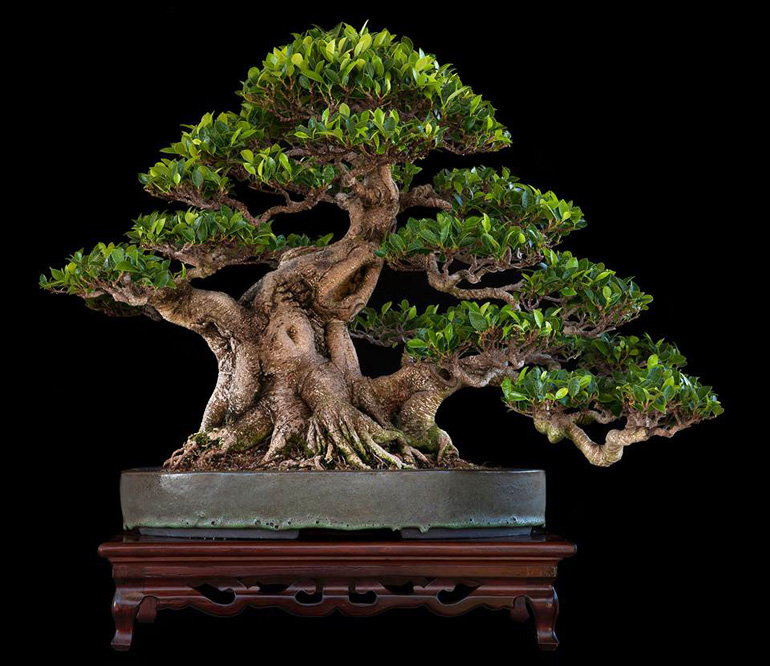All species used as bonsai do have something that makes them special - think of the deadwood on Junipers and Olives or the leaves changing color on Maples in autumn! For a Ficus the "specials" are the ability to grow air roots and with that the ability to fuse growth very easily.
Figweb is a very authoritative source when it comes to Ficus - please make use of them to get the correct scientific information you need:
http://www.figweb.org/Figs_and_fig_wasps/index.htm
Not all Ficus species are good for using as bonsai - some of the species's leaves will just not reduce enough and on some of them you will rarely get twiggy growth. This can be overcome by growing them as very big bonsai, but I am not a fan a of bonsai that is too big - up to a meter is high enough for me!
FICUS LUTEA is a an perfect example leaves being too big and a lack of twiggy growth:
There are about 755 Ficus species and only a very few are grown as bonsai. I believe, over time, more species will be explored as candidates for bonsai. Here from South Africa, one will definitely have to look into Ficus cordata.
Ficus cordata, the Namaqua fig, is a species of fig that occurs in two disjunct populations in Africa, one in the arid southwest of the continent, and a second in the northern subtropics. This is the dryer region one and if I remember correctly, this one was bought 10 years ago. Incredible leaf reduction, but not so easy to keep it healthy in a pot.
When it comes to more suitable species, the following are tried and tested suited for most styles:
1. Ficus microcarpa and it's variants.

(Above picture from https://bonsaibark.com/2018/08/06/elevated-company/)
Varieties: Indian Laurel, Green Island, Nitida, Chinese Banyan, Ficus 'Ginseng', Malayan Banyan, Ficus Long Island, Tigerbark Fig etc.
2. Ficus natalensis.

(Tree by Mack Boshoff)
3. Ficus salicaria .

( http://ofbonsai.org/techniques/shohin/the-willow-leaf-ficus-%E2%80%93-the-best-ficus-for-shohin-bonsai)
4 May 2019 - T be continued......















Impressive!
ReplyDelete